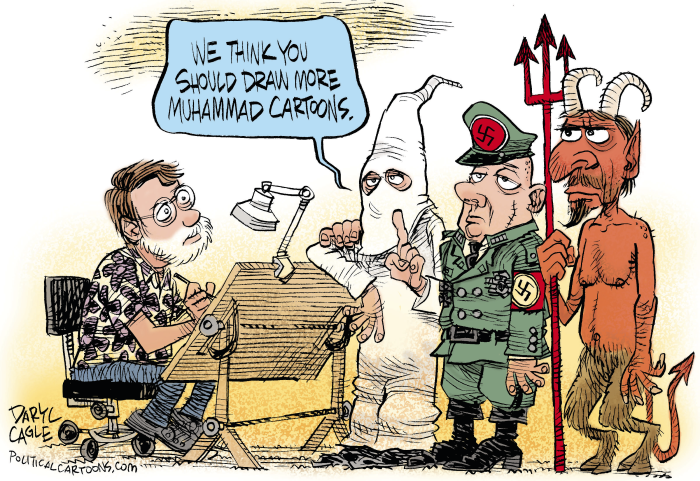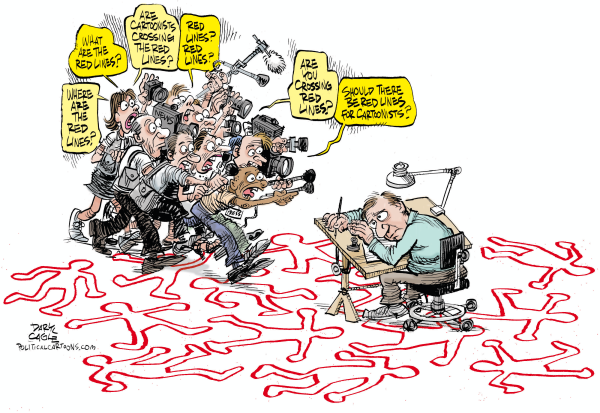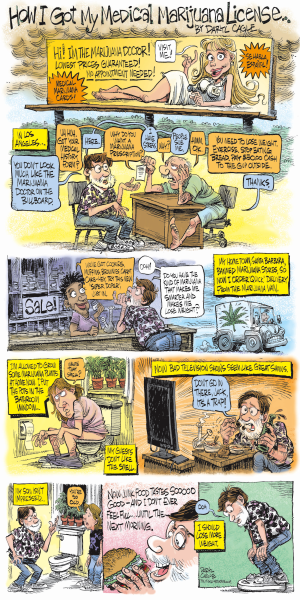The cartoon below is scanned from today’s Los Angeles Times, by cartoonist Mimi Pond. It is shown here about twice as big as it was printed, and it is much more legible here in the large size than it was in the newspaper, where the lettering looks like illegible, muddy blobs.
This is a problem lots of cartoonists have. They save their files with the fine black lines consisting of black, cyan (blue), magenta (red) and yellow – instead of just black. Newspapers have lousy printing so the colors rarely “register” or line up directly on top of each other, so the black and color lines muddy up and look like a globby mess.
For some reason, cartoonists insist on continuing to do this and seem oblivious to how terrible their work looks in print. We have this problem with some cartoonists we represent and no matter how many times I tell them how to prepare their art properly for print, they don’t hear it. I might as well be knocking on their front doors trying to sell them religion.
The solution to this is pretty simple, and we can all see it on the Sunday comics pages, where the black is just separate, crispy black, not a combination of all four colors. Most cartoonists start off with a clean black line drawing, then change their color settings to “RGB,” making the lines turn to three color slop but still looking good on the screen. The cartoonists for the Sunday comics are forced to comply with the rules their syndicates impose on them, and in this case, that’s a good thing.
Cartoonists need to keep their files in a CMYK format, with their black lines separate from the magenta, cyan and yellow, just like the Sunday funnies. I know I’m not going to see any change from the guilty cartoonists who work with us, who shall remain nameless (they know who I’m writing about, I’ve nagged them enough). I’m just banging my head against the wall.
And I doubt that I’ll ever be able to read one of these Mimi Pond cartoons in the newspaper.
















